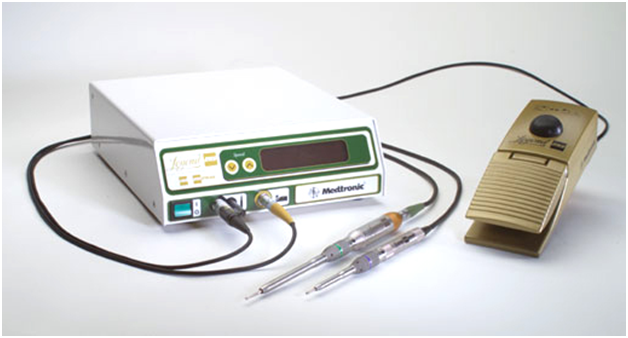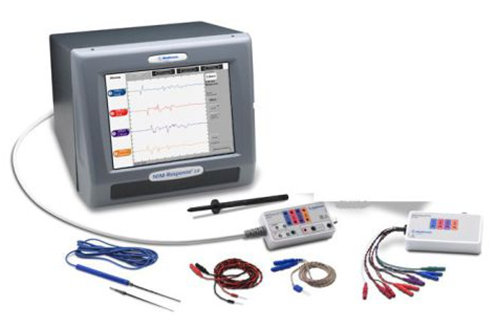Otology /Ear Care Centre
Otology is study of the ear. It is an expertise to provide ear care.
Sound waves enter the ear canal and vibrate the eardrum. These vibrations are transmitted via 3 tiny hearing bones (malleus, incus and stapes) in the middle ear to the inner ear where the sound is processed by the cochlea in the inner ear.
A) Hearing Loss
Hearing loss is of three kinds –
- 1.Conductive Hearing Loss - in which sound waves cannot reach the inner ear due to failure of transmission by eardrum or hearing bones.
- 2.Sensorineural hearing loss - in which the sound waves reach the cochlea i.e the hearing organ in the inner ear normally but they are not transmitted to the brain effectively either due to a problem in the inner ear or in the nerve which transmits signals to the brain
- 3.Mixed Loss – in which the hearing loss is due to both conductive as well as sensorineural components
Ear surgeries performed using Carl Zeiss Microscope
B) Ear Discharge
Ear discharge is usually caused due to an infection of the external or middle ear. It can be acute or chronic. Chronic middle ear disease can cause ear discharge on and off for several ears. The treatment for chronic middle ear disease is usually surgical, either by repairing the ear drum (tympanoplasty), if it has perforated or removing the disease by drilling into the bone (mastoidectomy)
C) Ear Pain
Usually acute in nature, common causes of earache include excess wax in the ear, external or middle ear infections, ear injuries, referred pain to the ear from teeth or throat and Temporomandibular joint disorders.
Some of the common diseases or disorders of the ear are –
1. Wax build up in the ear canal –
This can be easily removed by syringing or suctioning. Use of ear bud is not advised since it will only push it inside. Vigorous attempts to clean using ear buds can also cause injuries to the ear canal leading to ear infections or even narrowing of the ear canal.
2. Disorders of eardrum –
Holes in the eardrum or perforation in tympanic membrane/scarring of the eardrum are caused by infections or trauma. This can be easily repaired by tympanoplasty, a small procedure usually performed under local anaesthesia in which the ear drum is repaired using the patients own tissues.
3. Disorders of middle ear –
- A) Fluid behind the eardrum which can be removed by myringotomy and further collection can be avoided by placing a small plastic tube called grommet.
- B) Problem in movement of hearing bones can be explored to detect the problem and plastic prosthesis can be placed to improve sound transmission. The most common condition which leads to this type of hearing loss is Otosclerosis. The stapes (innermost hearing bone) is fixed and immobile. Therefore, a small window is drilled in the inner ear called stapedotomy. This is done by using Medtronic Skeeter drill (0.6mm) and console. This ensures precision drilling and prevents complications such as floating footplate which might result in a dead ear. We use Gyrus Causse piston prosthesis to bridge the gap between incus and stapes footplate after removal of stapes for sound transmission.

Medtronic Midas Rex Legend Ehs Stylus High-Speed Surgical Drill
- C) Cholesteatoma – Migration of skin from outer ear into the middle ear eroding the structures in the middle and the inner ear over a period of months to years. Sometimes the skin extends and destroys the bony partitions in the bone behind the middle ear called mastoid. This requires surgical intervention for eradication of the disease. Name of this surgery is Mastoidectomy. This is a very skillful surgery done using Medtronic Midas Rex Legend Ehs Stylus High-Speed Surgical Drill at our hospital.
- D) The Midas Rex Legend EHS Stylus High-Speed Surgical Drill offers high-torque in a compact size, making it suitable for ear surgeries and working in very narrow spaces.The facial nerve, i.e the nerve which controls facial movements passes through the ear. Sometimes this nerve is dehiscent, i.e not covered by its bony covering. In such cases injury to the nerve during surgery can lead to facial paralysis. We use Medtronic NIM Response 2.0 Nerve integrity monitor to prevent injuries to the nerve.

Medtronic NIM Response 2.0 Nerve integrity monitor
How are some of these conditions treated?
The goal of the treatment is to make ear dry. Ear infections can be active or inactive. Treatment depends on whether or not there is a hole in the eardrum or whether or not there is involvement of the mastoid bone. Patient may have ear discharge, hearing loss, noise in the ear, dizziness, pain or, rarely, weakness of the face.
Draining ear is an unsafe ear. Microsurgical techniques are used to replace or to reconstruct the diseased hearing bones in the middle ear and to make the ear dry.
Types of Ear Surgeries-
1. MYRINGOPLASTY
The surgery performed to repair the hole in the eardrum is called Myringoplasty. This operation seals off the middle ear cavity. Surgery is performed under local anesthesia and patient is discharged on the same day. Patients own tissue is used to make the new eardrum. Usually healing is completed in 4-5 weeks, and the success of surgery in good hands more than 99%.
2. TYMPANOPLASTY
This surgery is performed to eliminate any infection and to repair the eardrum as well as the hearing bones in the middle ear. This will provide a safe middle ear and will also improve hearing in many cases. The surgery can be performed through the ear canal or by making an incision behind the ear. The diseased hearing bones can be replaced by a prosthesis to establish the conductive mechanism of the ear. This is also a same day surgery.
3. TYMPANOPLASTY WITH MASTOIDECTOMY
The surgery is performed to eliminate cholesteatoma from the middle ear as well as from the bone around the ear called mastoid. cholesteatoma is nothing but skin growing in wrong place. Ear canal skin starts growing in the middle ear and can also extend and destroy the surrounding bone. These patients develop a foul smelling discharge. Surgery remains to be the mainstay of treatment for this condition.
There are two kinds of mastoid surgery
- a) Intact canal wall
- b) Canal wall down
4. STAPEDOTOMY
The surgery is performed for otosclerosis. In this the third hearing bone in the middle ear called stapes is removed and piston prosthesis is used to reconstruct the hearing bones.
4. Disorders of Inner Ear –
The inner ear has a dual function- it acts as a sensory organ for hearing as well as for maintaining balance.
- a) Age related sensorineural hearing loss or presbycusis is usually observed in the elderly population. Appropriate hearing aid is a advised after giving a trial.
- b)Vertigo or a sensation of spinning is usually felt due to inner ear disorders. Commonly seen balance disorders include Benign Paroxysmal Positional Vertigo (BPPV), Labyrinthitis, Vestibular neuropathy, Meniere’s Disease etc. Acute episodes are usually treated with medication to relieve the spinning and nausea.Definitive treatment is by usually by vestibular rehabilitation Therapy (VRT).
5. Facial Nerve Disorders –
Facial Paralysis involving one side of the face or rarely both can be caused due to trauma to the facial nerve or inflammation due to infections. This has to be differentiated from facial paralysis caused due to central nervous system disorders. Treatment is by medication or in certain cases of trauma by surgery to repair the nerve.
